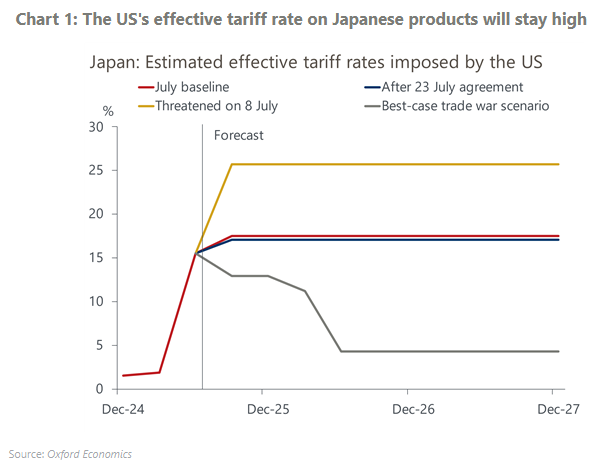US-Japan Trade Deal Fails to Shift Japan’s Growth Outlook
The trade deal agreed between the US and Japan raises the baseline tariff on Japanese goods to 15% from 10%, but avoids the threatened 25% rate. Tariffs on autos have been lowered to 15% from 25%. Despite the agreement, we maintain our bearish outlook on Japan’s growth.
We estimate that the US’s effective tariff rate on Japanese products is around 17%, in line with our baseline assumption. Lower tariffs on autos are a positive, given the sector’s significant contribution to the economy and its broad domestic supporting base.
A decline in uncertainty on US-Japan trade is also positive for the investment outlook. However, gloomy export prospects and still high uncertainty over global tariffs prevent us from making a significant revision to our forecast at this stage.
In exchange for lower tariffs, Japan will broaden market access for US producers in agricultural products and autos, but this is unlikely to have a significant impact in the short run. A key to reaching the deal appears to have been Japan’s commitment to invest $550bn in the US, though details on the program are unclear

